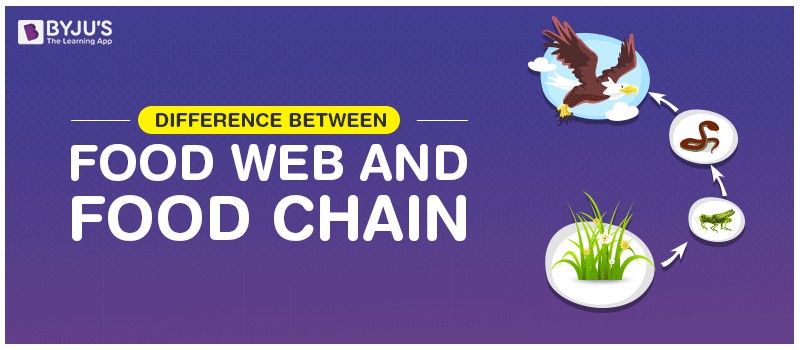Understanding the intricate relationships within an ecosystem requires grasping the concepts of food chains and food webs. While both illustrate the flow of energy and nutrients, they differ significantly in complexity and representation. A food chain depicts a simplified, linear pathway, whereas a food web offers a more realistic, interconnected view of feeding relationships.
A food chain represents the transfer of energy and nutrients in a linear sequence, where one organism consumes another. Each organism occupies a specific trophic level. For example, primary producers like plants occupy the first trophic level, herbivores (primary consumers) occupy the second, and carnivores (secondary and tertiary consumers) occupy higher levels, culminating in apex predators.
 Food chain depicting energy flow from the sun to a hawk
Food chain depicting energy flow from the sun to a hawk
In contrast, a food web is a complex network of interconnected food chains. It illustrates the multitude of feeding relationships between various organisms within an ecosystem. In essence, it’s a more accurate and comprehensive representation of how energy and nutrients flow through an ecological community.
Key Differences Between Food Chains and Food Webs
The differences between food chains and food webs are more than just scale. They impact ecosystem stability, species adaptability, and the overall representation of ecological interactions.
Linearity vs. Complexity
A fundamental distinction lies in their structure. Food chains are linear pathways, illustrating a direct sequence of who eats whom. Food webs, however, are intricate networks reflecting the diverse and interconnected feeding relationships within an ecosystem.
Feeding Specificity vs. Dietary Diversity
In a food chain, organisms typically feed on a specific organism at the lower trophic level. This specificity creates a vulnerable system, where the loss of one species can significantly disrupt the entire chain. In contrast, a food web shows that organisms often have access to multiple food sources from lower trophic levels. This dietary diversity enhances ecosystem stability.
Adaptability and Resilience
Food chains offer a limited perspective on an organism’s adaptability and competitiveness. The rigid structure doesn’t account for dietary shifts or alternative food sources. Food webs, with their interconnectedness, better represent an organism’s ability to adapt to changing environmental conditions and compete for resources. They highlight the resilience that comes from having multiple options for sustenance.
Ecosystem Representation
Food chains provide a simplified, often idealized view of energy transfer. They don’t capture the complexity of real-world ecosystems, where organisms participate in numerous feeding relationships. Food webs, on the other hand, offer a more realistic and comprehensive representation of energy flow and species interactions within a community.
Food Chain vs. Food Web: A Summary Table
| Feature | Food Chain | Food Web |
|---|---|---|
| Structure | Linear pathway | Interconnected network |
| Feeding Habits | Specific prey | Diverse diet |
| Adaptability | Limited | High |
| Ecosystem Representation | Simplified | Comprehensive |
The Importance of Understanding Food Webs
Understanding the complexities of food webs is crucial for ecological studies and conservation efforts. They allow ecologists to:
- Assess Ecosystem Stability: By analyzing the connections within a food web, researchers can predict how changes in one population might affect the entire ecosystem.
- Identify Keystone Species: Food webs help identify species that have a disproportionately large impact on the ecosystem’s structure and function. The loss of a keystone species can trigger cascading effects throughout the web.
- Model the Impact of Environmental Changes: Food webs can be used to model the potential consequences of pollution, climate change, and habitat destruction on the flow of energy and nutrients.
- Develop Effective Conservation Strategies: By understanding the intricate relationships between species, conservationists can develop more targeted and effective strategies to protect vulnerable ecosystems.
Conclusion
While food chains provide a basic understanding of energy transfer, food webs offer a more realistic and comprehensive view of the intricate relationships within an ecosystem. Recognizing the differences between these concepts is essential for understanding ecological processes and addressing environmental challenges. The complex interplay of species within food webs highlights the interconnectedness of life and the importance of preserving biodiversity.